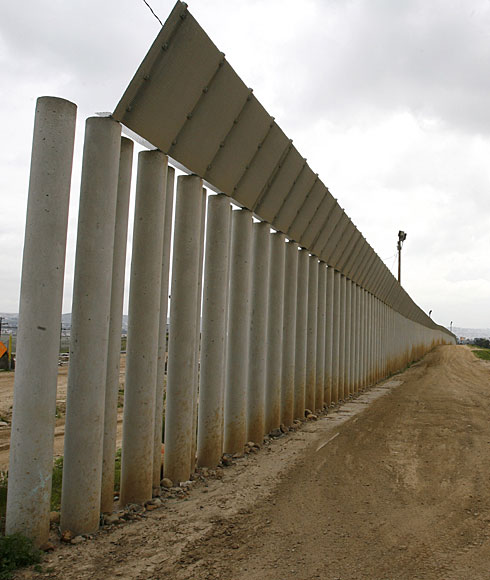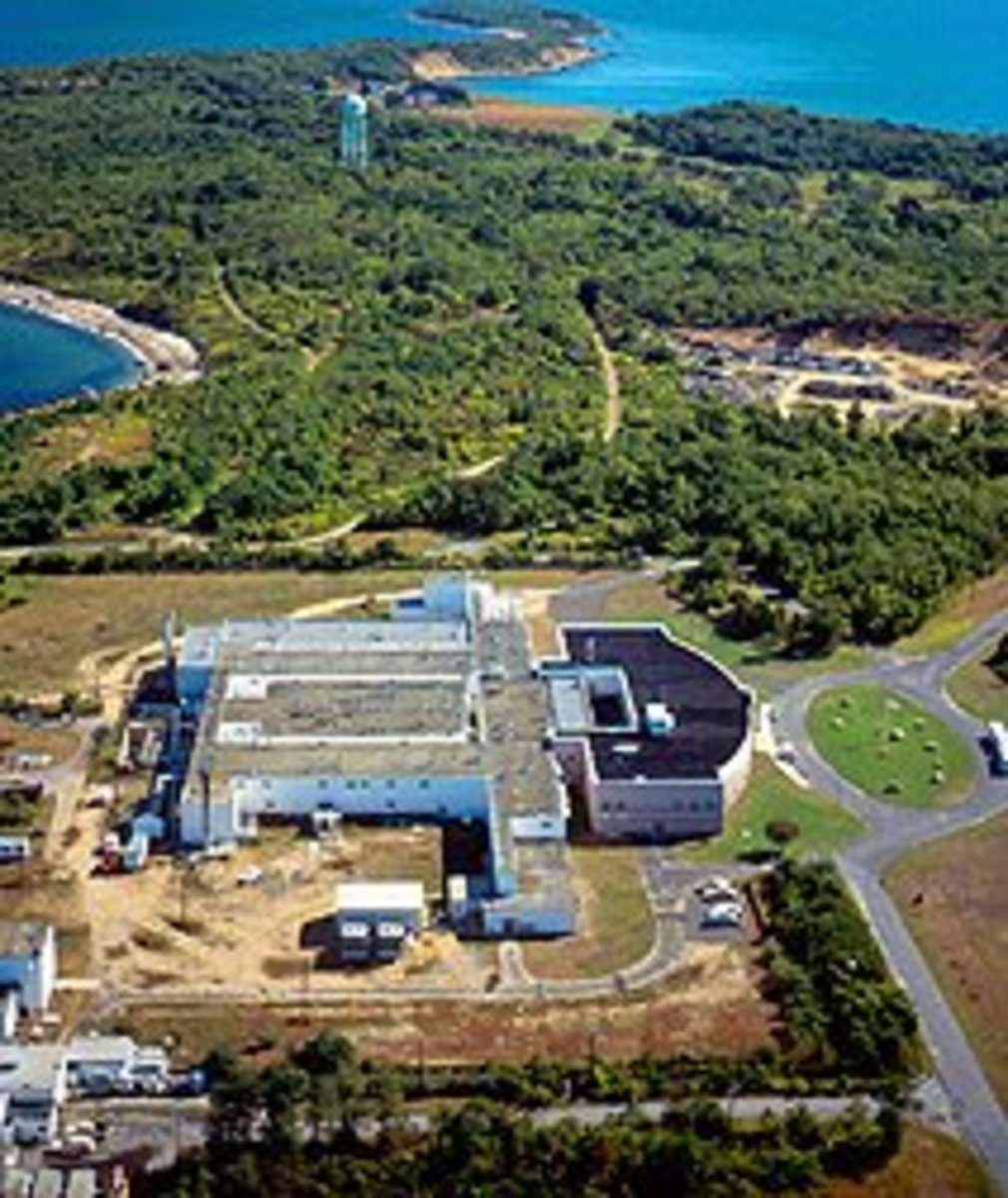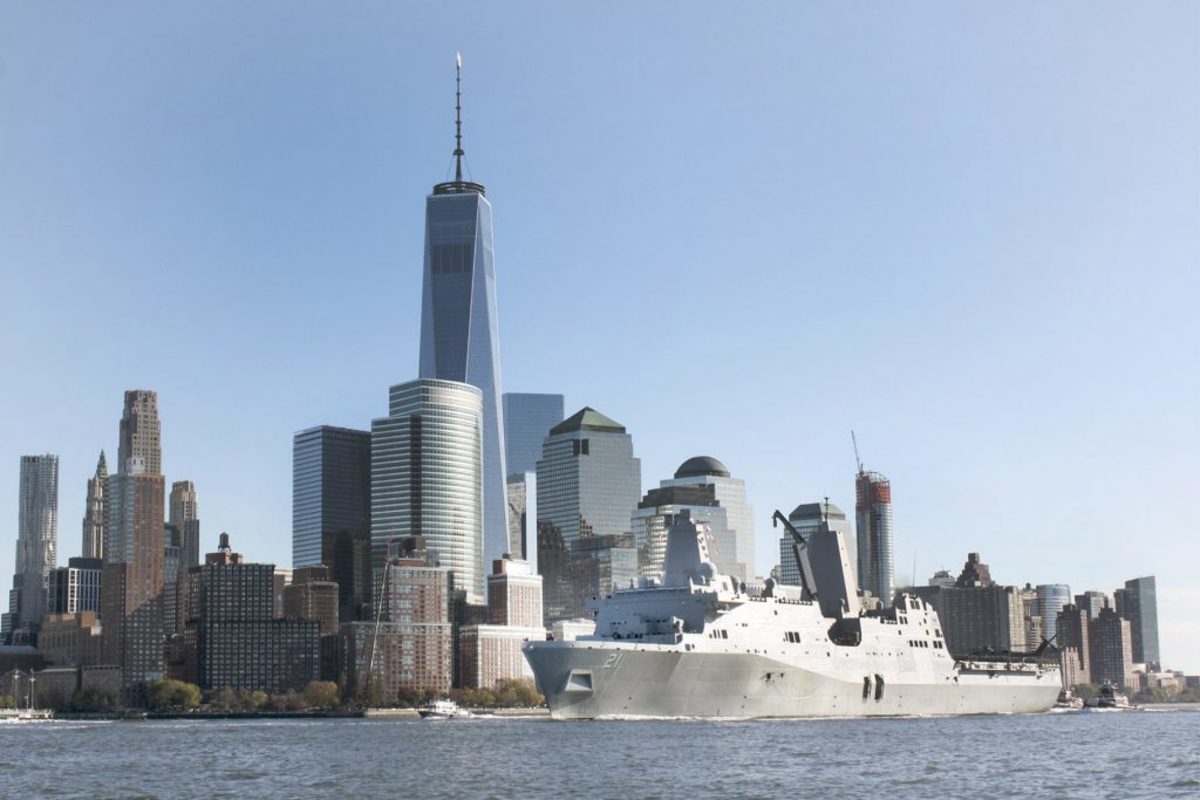Post-9/11 Security Policies On The Northern Border: Who Is At Fault?

Security Policy and Bilateral Border Control: 9/11-Onward
Marty Thurston
This essay will discuss the nature of Canada-U.S. border security policies as they have unfolded since 9/11. Through Flynn, I will assess the compatibility of security and trade facilitation measures at the border. I will discuss the practical conditions essential to achieve these objectives from two scholarly perspectives. Following, I will discuss the theoretical paradigms that each country subscribes to and why, before giving a specific example of poor management from the CBCA. I will tie things together by ending with a discussion of citizen perception, and how perception can dictate policy paradigm. To conclude I will examine the viability of using Flynn’s layered defence in conjunction with Alden’s ‘cops vs. technocrats’ paradigms.
Canada and the United States are bound by interdependence and border-related policies can be used as instruments to control various political, economic, and societal differences between our two countries. This is not to say that interdependence is an isolated occurrence between Canada and the U.S., because American responses to Canada will affect a country like Mexico as well. This has been referred to in Hale as ‘duel bilateralism’.
Both countries prioritize security policy slightly differently and this is evident in the way each country has manoeuvred itself on border-security policies. The Canadian government operates through the coordination of Public Safety Canada, the Canada Border Services Agency (CBSA), and Transport Canada. The United States has many more agencies and committees committed to border security but the Americans operate primarily through the Department of Homeland Security (DHS), Customs and Border Protection, the Department of Justice, the FBI, and the ATF. Last but definitely not least, the American Congress plays a major role in shaping the way policies are formed. Canadian policy tends to views the border differently than U.S. policy, and it only takes a look at the geographical population distribution between the two countries to see why. While it has been the objective of some American authors to claim that Canada tends to ‘milk’ trade-flow for all its worth in the economic sense, it is not merely an economic advantage. Having such a majority of its population located within hours of the border, Canada has a cultural affinity to the border which affects the majority of its population, especially when compared to the United States.
Canada tends to take an ‘all-hazards’ approach to border management, building policies based on a broader standard of risk-management. Other important influences include public health and emergency management. American priorities tend to be geared much more towards terrorist-prevention. Because of the fact that there are so many independent actors influencing American policy, their vehicle for implementation has been in the form of many programs including Real-ID, Secure Flight, and WHTI, SEVIS, and visa waiver. When entering agreements with the United States, the best Canada can do is enter with the objective of reciprocity. Of course, Canada also demands the same sovereign protections and provisions that the U.S. would be entitled to.
Compatibility of Security and Trade Facilitation: Flynn
Flynn suggests that there are paradoxes within the framework of facilitating trade and enforcing tight homeland security. He discusses the ‘hardened border paradox’ in which borders become congested and physical barriers ultimately do not achieve what they are constructed to do. Examples include China’s Great Wall, or the debate over a U.S.-Mexican fence. On the flip side is the ‘open border paradox’ which is illustrated by the past fifteen years of incremental liberalization that Canada now relies on. Of course, with Canada there would be absolutely no advantage in fencing-in, and both the lack of mass immigration, and sheer size of the border attest to this. This foreshadows the dangers of attempting to use ‘hardened’ methods in an open policy system.
Flynn argues that we do not have to choose between trade and security however, and outlines two conditions that must be met. First, “developing the means to validate in advance the overwhelming majority of people and goods that cross the border as law-abiding and low risk; and second, enhancing the means of federal agents to target and intercept inbound, high-risk people and goods.” (Flynn) This is considered the ‘layered risk’ approach because it is an attempt to push back the border and remove as many non-risks as possible.
Flynn sees little hope in fencing-in, but claims that there is promise in smart-border initiatives, especially with Canada. His take on risk management includes both a political and economic position. “It requires a risk management approach to policing cross-border flows that includes the close collaboration of the major beneficiaries of an increasingly open North American continent – the United States’ neighbors to the north and the south – and the private sector.” (Ibid.) Practical conditions for Flynn are observed primarily through a risk management perspective.
Compatibility of Security and Trade Facilitation: Kilroy
Kilroy suggests that Canada and the U.S. have “realigned” security policies in the post-9/11 period. “In December 2002, the Bi-national Planning Group (BPG) was stood up, after exchanging formal diplomatic notes and terms of reference through diplomatic (secretary of state and ministry of foreign affairs) channels.” (Kilroy, 7) The following are list of achievements of the BPG, as released by the Department of National Defense:
- introduced a Canadian Forces presence in the U.S. Northern Command Joint Operations Center
- developed and participated in bi-national training and exercises
- helped define the relationship among NORAD, U.S. Northern Command and Canada Command
- enhanced inter-agency cooperation
Kilroy argues that one of the biggest obstacles to further Canada-U.S. security cooperation has been stalled because of what Canadians consider a ‘threat’ to their sovereignty. “Cultural affinity and nationalism run deep in all three countries and any proposed security agreements which imply a loss of national identity or sovereignty will not pass muster.” (10) This has been evident in the evolution of the Canadian Department of Public Safety, in response to the Department of Homeland Security in the U.S. Kilroy’s ‘cultural affinity’ is precisely why Canadian policies tend to reflect an ‘all-hazards’ approach, where the U.S. focuses more on ‘security’ and ‘risk-management’ approaches, but I will discuss this more in a further section.
Some of the most profound threats would be aimed at entry-points as both a target for attack and a transit point for future attacks. As a result of the physical geography along the Canada-U.S. border, eight of the ten busiest crossings are either bridges or tunnels which means passing over or under water. Hataley notes that the consequence of this type of infrastructure makes these passage routes potential targets for terrorism, by disrupting important trade routes. He claims that “balancing the need to facilitate rapid trans-border movement of products has resulted in low inspection rates: about 4.5 per cent for CBSA.” (3) The main concern for Hataley is that programs like Nexus and C-TPAT are based on the ‘technocrat’ paradigm which provides no security guarantee against threats. Even regardless of Canada’s immigration policy, the volume of traffic between nations makes it virtually impossible to stop one intruder from slipping through the cracks, which would be adequately dangerous considering current warfare tactics.
If we think of the border as a transit point for potential terrorist threat, the Americans have centered their claim on what has been considered weaknesses in the Canadian immigration and refugee system. “In December 1999, CSIS confirmed not only that Canada’s immigration and refugee policies were attractive to terrorist organizations, but also that a number of terrorist organizations had already taken advantage of the rules to establish a presence in Canada.” (Hataley, 4) The image of the Canada-U.S. border, as I have mentioned, plays a very important role in how policy develops. Hataley suggests that Canada ought to re-conceptualize the border within a public safety mandate instead of just a revenue-generating one. A Canadian might claim that Hataley is over-simplifying, and that the American campaign is over-zealous in its terrorist man-hunt, but perhaps Hataley is correct.
While it is true that each government has a separate agenda, it is also true that terrorism does not begin nor end at the point-of-entry. The U.S. has no obligation to resume negotiations with Canada if they feel that Canada may pose a risk to their national security. If Americans feel that lax Canadian immigration policies are not up-to-code, then Canada has no right to object to American unilateralism or withdrawal. Hataley does not go into great detail about how Canadians should re-conceptualize the border, but I get the impression that the onus is being put on Canada to step-up its game, or deal with the negative consequences. Whether this argument would hold up against Canadian cultural affinity is completely different question.
How do security paradigms work for and against one another?
I want to now discuss an important theme pulled out of the Hale/Marcotte paper. To take full advantage of the Canadian position, it is important to understand and manoeuvre around the strongest American priority, namely, terrorism. While Canada can not attempt to mimic these priorities, it is crucial to understand how American security policies directly influence any proposed Canadian policies. These tailor-made policies will fair much better in the effort to integrate security policies. It is not simply that the U.S. does not prioritize the border, but profound domestic changes following 9/11 have put a premium on security-related policy.
One point brought up by Hale/Marcotte is that collaboration is often marginalized by the administrative challenges the U.S. has undertaken. Not unlike a rabbit being pulled out of a hat, the Department of Homeland Security emerged as the “amalgamation of all or part of 22 ‘legacy’ agencies, [which] was the largest U.S. government reorganization since the creation of the Department of Defence in 1947.” (7) With so many different actors in such a broad framework of administration, one might argue they could impair administrative capacity. This is a good example of the ‘security-first’ paradigm but American policy is also influenced by a ‘risk-management’ paradigm.
Alden’s cops vs. technocrats paradigm is “based on principles of cost-benefit analysis [and] is more likely to apply a mixture of policy tools that seek to enhance security while accommodating the goals and activities of economic and societal interests that do not pose significant security risks. (Hale, 9) My interpretation is that the ‘cops vs. technocrats’ approach is better-suited to accommodate issues like the ‘hardened border paradox’ in which filtering out small-scale risks has the effect of increasing prospective rewards for illegal groups who are able to exploit them. It is a better approach because it does not take an inefficient, ‘us vs. them’ mentality.
Using the technocratic perspective, Flynn’s notion of ‘layered defence’ is an attempt to identify critical points throughout travel and supply chains to facilitate separation of higher from lower risk travelers and shipments. This provides incentives for relevant business and other actors to cooperate with security screening through expedited processing.
At this point I will discuss a number of programs that have dominated bilateral relationships since 9/11. In an effort to enhance security and facilitate trade, some initiatives have included CSI, C-TPAT/PIP, Nexus, and E-passports.
The Container Security Initiative (CSI) was set up shortly after 9/11 to address threats posed by a potential terrorist use of a maritime container to deliver a weapon. It is based on teams of American officers from the Customs and Border Protection and Immigration and Customs Enforcement agencies who attempt to pre-screen containers that could be related to a terrorist threat to cargo destined to the U.S. CSI has been successful because it is based on reciprocity between partners, which Canada has taken advantage of.
The Customs-Trade Partnership Against Terrorism (C-TPAT) was launched in November 2001 as a partnerships between government and the private sector. They work alongside the CBP to protect supply chains from concealment of terrorist weapons. Through their collaboration the CBP has been able to provide reduced inspections and expedited processing. A complimentary program was set up in Canada known as the Partners in Protection (PIP) which has a similar mandate to C-TPAT and is provided by the CBSA
The Nexus program is a collaboration of the CBSA and CBP in order to simplify the border-crossing process for members while enhancing security. They qualify members based on a registration process that subjects them to a risk assessment inquiry from both Canada and the U.S. Nexus’ self-serving kiosks function as an incentive for frequent travellers to participate, effectively making the proverbial haystack significantly smaller.
Since 9/11 there has also been a genuine interest in creating more sophisticated, machine-readable passports. E-Passports are another example of citizens being given an incentive to comply with increased security measures. These passports either comply with Basic Access Control standards or Extended Access Control. BAC standards are usually found in first-generation E-Passports that includes a simple biometric and a digital signature. EAC standards are much more difficult to impersonate, as they often utilize enhanced biometric data either in the form of fingerprint identification or an iris scan.
CBSA Internal Audit and Effectiveness Under the Customs Act
From January to June 2008, an audit was performed in the CBCA to determine the effectiveness of the organization’s management, control, and disposal or seized goods. It was focused on ports of entry, storage facilities, and regional security. On organizational grounds, the CBSA was having difficulty meeting guidance, monitoring, and information collection standards. This has been a case of poor management on behalf of the central authority.
“The disparate division of responsibilities between the branches created a leadership and accountability void whereby there was no centralized structure providing direction and coordination. This resulted in a lack of accountability and a partial loss of program oversight.”
(CBSA Internal Audit, 2008)
The main issue is that a lack of top-down oversight means that risk assessment and security management will not be effective if there is no driving enforcement. If there is no driving enforcement the organization is much more prone to fail at detection/correction procedures.
There are five security zones in Canadian government: public, reception, operations, security, and high security. The audit showed that fifty-one storage facilities are considered operations zones, fifteen are public zones, and two are high security zones. The findings were such:
- Access to storage facilities by CBSA employees was not controlled in 43 (of 57) interior storage facilities and in all exterior storage areas.
- Access to storage facilities by non-governmental persons was not controlled in 8 (of 57) interior storage facilities and in 7 (of 11) exterior storage areas
- Access to storage facilities by non-governmental persons, for unauthorized intrusion, was not continuous for 39 (of 57) interior storage facilities and for 9 (of 11) exterior storage areas.
This is direct proof of a lack of procedural oversight. In terms of risk assessment, lower-than-average security standards can suffice as long as the risk is minimal. However, this is not purely a matter of managerial discretion; government procedure dictates that if such a facility is operated under less-than-average standards, it must do so, on the basis of a documented threat and risk assessment (TRA). “The audit found that a TRA was conducted at only one location (encompassing two facilities) of the 66 storage facilities operating as operations or public zones.”
Citizen’s Perceptions and Influences on Policy Development
Karlyn Bowman’s response in the Leroy article discusses through poll data, how Canadians’ attitudes of the U.S. have changed from 1990-2005. Bowman claims that “It is not clear whether, for Canadians, deep ties trump current bilateral differences and differences about the United States’ role in the world.” (17) In response to Bowman, I believe that there are aspects of ‘deep ties’ but they are a purely utilitarian response on behalf of Canadians. In this sense, there was never a question of whether Canada would tolerate U.S. actions, but I believe that many Canadians have come to accept the United States in a type of familial relationship. Canadians for the most part have learned to accept what they can get, where one might argue that during the immediate post-9/11 period, there was a movement of ‘security entitlement’ taking place in the U.S. Both countries had previously witnessed catastrophes like the Air India incident in British Columbia or the World Trade Centre attacks in New York in the early 1990s. The difference is that 9/11 struck a chord in Americans that literally changed everything.
Without making light of the events that took place, I believe that many Americans’ frustration carried a feeling of being insulted; of being personally devastated. I believe there is a significant difference between one feeling like something has ‘happened’, and feeling like something has been ‘put upon you’. This could be shown relevant to the different policy directions of each nation. If one feels like there was an ‘occurrence’, the natural solution is to identify what caused it and prepare for future ‘occurrences’. On the other side, if one feels like he has been done wrong, he will react to the situation by seeking out those who wronged him. Without claiming that Americans do not have a legitimate right to feel wronged, I believe these kinds of different sentiments have been driving forces of agenda-setting which lead to variations in bi-lateral policy implementation.
Therefore, an obvious solution would be to combine Flynn’s ‘layered defence’ with the ‘technocrat’ paradigm, but as discussed, there are a number of challenges to utilizing this objective. I have already discussed the barriers to cooperation with respect to threat perceptions and technical applicability, and have already touched on the sheer scale of border management. However, it is equally important to discuss the nature of open policy systems, which is the ultimate difference between the ‘cop’ and ‘technocrat’. The evolution of American security policy in the post-9/11 period has resulted, many times simply by default, in what has been perceived as an ‘us vs. them’ attitude in an allegedly open policy system. We can pinpoint this as being a major catalyst to the ensuing dysfunction of integrated security because the main strategy of the open policy system is to facilitate an incentive for citizens to work alongside government to pursue common objectives. At the same time, I mention that the ‘us vs. them’ mentality is merely a by-product of a shifting policy environment. In effect, one can not be too critical of either government because they are both in uncharted waters, and creating a smart border is something that must evolve over time and trial and error experimentation.
A successful relationship between Canada and the U.S. requires one to take a number of influences into account. The reality of duel bilateralism can lead to different paradigms being utilized by different actors, which can lead to obstacles and contradictions for policy-makers. Cultural affinity is not lost on this concept. Physical geography also plays an important role because it has been found that points-of-entry would be perhaps the largest targets to cross-border movement. Canada has been scolded for what are considered too-loose immigration and refugee policies, but since 9/11 we have seen a pattern of national and bilateral agreements designed to enhance security and facilitate trade. Very expansive security-policies in the United States have put Canada in a position to match interests, but question the effectiveness of such wide-ranging programs. Lacking physical resources, the CBCA internal audit reflects, to some degree, Canada’s attempt and subsequent failure at participating in such an expansive policy framework.
While there are undoubtedly bugs to work out, we have started to see examples of policy-makers finally approach the open policy system with viable, open solutions. Of course the only way security integration will progress, is by governments directly working with citizens through open policy systems, and not against them through ‘hardened’ border initiatives.
Works Cited
Audit of the Control and Disposal of Goods Seized Under the Customs Act. Internal
Audit Report. February 2009.
[http://www.cbsa-asfc.gc.ca/agency-agence/reports-rapports/ae-ve/2009/sei-saieng.html#a10]
Department of National Defence
[http://www.dnd.ca/site/news-nouvelles/view-news-afficher-nouvelles-eng.asp?id=1528]
Flynn, Stephen E. (2003), “A False Conundrum: Continental Integration vs. Border
Security”, in Peter Andreas and Thomas J. Biersteker, eds., The Rebordering of North
America: Integration and Exclusion in a New Security Context (New York:
Routledge), 110-27.
Hale, Geoffrey and Christina Marcotte (forthcoming), "Border Security, Trade and Travel
Facilitation", in Monica Gattinger and Geoffrey Hale, eds., Borders and Bridges:
Navigating Canada's Policy Relations in North America(Toronto: OxfordUniversity
Press).
Hataley, Todd (2007), "Catastrophic Terrorism at the Border: The Case of the Canada
US Border", Journal of Homeland Security Affairs, Supplement # 1, September;
http://www.hsaj.org/pages/supplement/issue1/pdfs/supplement.1.2.pdf
Kilroy, Richard J. Jr. “Perimeter Defense and Regional Security Cooperation in North
America: United States, Canada, and Mexico.” Homeland Security Affairs ,
Supplement no. 1 (2007), pp. 8-11. http://www.hsaj.org/?special:article=supplement.1.3
Leroy, Christophe, ed. (2005), "Threat Perceptions in the United States and Canada", One
Issues: Two Voices (Washington, DC: WoodrowWilsonCenter, November).
http://www.wilsoncenter.org/events/docs/threats.pdf






